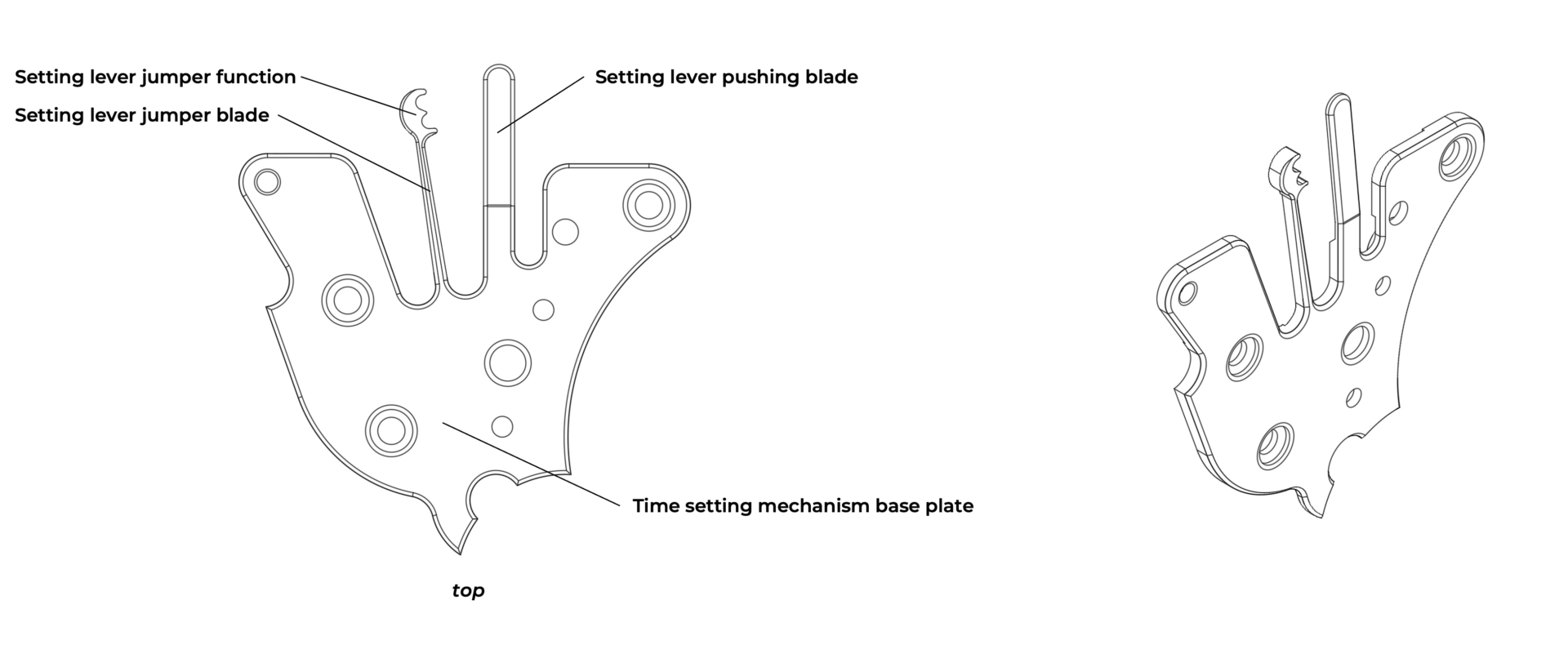SETTING LEVER JUMPER
The setting lever jumper is part of the winding and time-setting mechanisms. It defines the two positions (winding and time-setting) of the setting and, consequently, establishes the two same positions of the setting lever mechanism and its travel. In many cases, the setting lever jumper is cut from the base plate (bridge) of the winding mechanism.
The setting lever jumper emerged in 1847 with Antoine Le Coultre’s invention of the setting lever mechanism. It allows the switching of the crown control between the winding and time-setting mechanisms.
The major advancements made to Le Coultre’s invention aimed to multiply the functions adjustable by the crown.
The watchmaker begins the artisanal production of the setting lever jumper by engraving its profile using a tracer on the surface of a steel plate slightly thicker than the finished component. Next, the watchmaker marks the drill holes for its screws and feet. Then, the contour of the jumper is delicately cut using a piercing saw. The sides of the jumper are then filed to bring the setting lever jumper to its final thickness and in absolute accordance with its form. The heel and blade of the jumper are then beveled and polished using customary tools (files, burnishers, polishing). These operations are particularly delicate due to the sometimes complex profile of the setting lever jumper (especially when it also forms the winding mechanism bridge). Following the rules of the art, the craftsman then stretches the lines on the sides of the part (satin finishing) and on the tiny flat that remains on the upper surface of the spring.
The heat treatments and subsequent blanching operations that follow are also particularly delicate due to the complex profile of the jumper.
The electrical discharge process is used to optimize production costs for a single piece or a small series of components. Implementation costs and machine processing time remain relatively low and suitable for small production volumes. Additionally, this technology allows for the cutting of complex and fine profiles without exerting any mechanical stress on the component during its fabrication. Compared to the artisanal method, electrical discharge cutting offers a considerable time-saving with positive impacts on the decoration stages. The end of the manufacturing and decoration process resembles the artisanal method or the required level of finishing.
For large-scale production, the investment in a stamping tool justifies manufacturing setting lever jumpers at an optimal cost, especially when the jumper also serves as the bridge for the winding mechanism, presenting a complex profile. The expanded outline of the profile is thus stamped directly into a strip of steel slightly thicker than the finished component by a stamping press. Manual steps, however, remain unavoidable. The setting lever jumper must be brought to its final dimensions (profile and thickness) while providing the desired finishes and decorations (satin finish, beveling, etc.).

